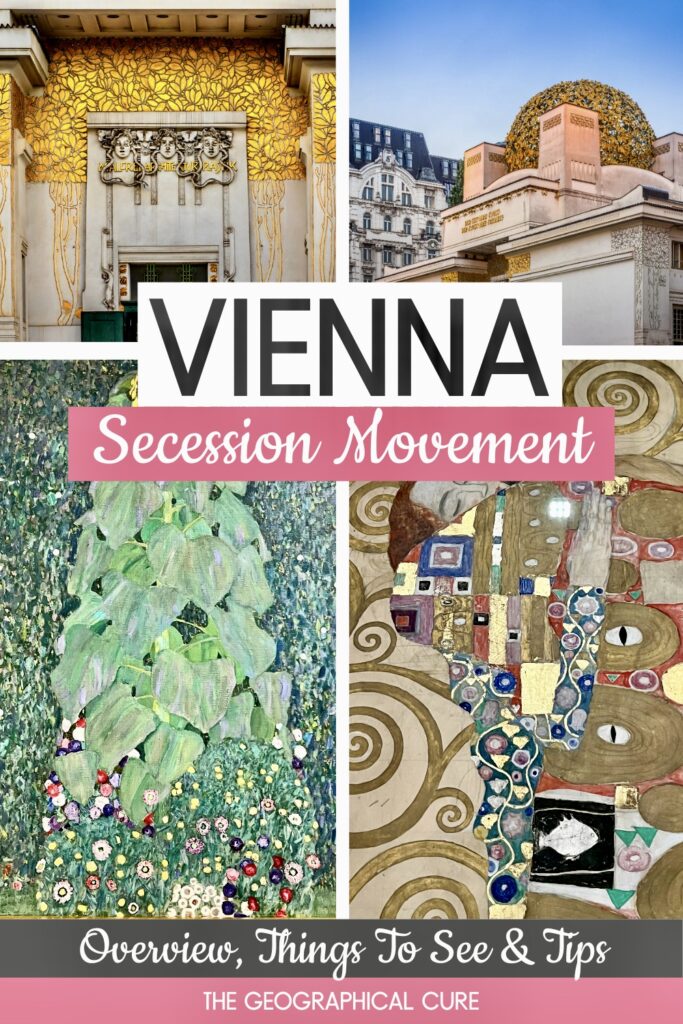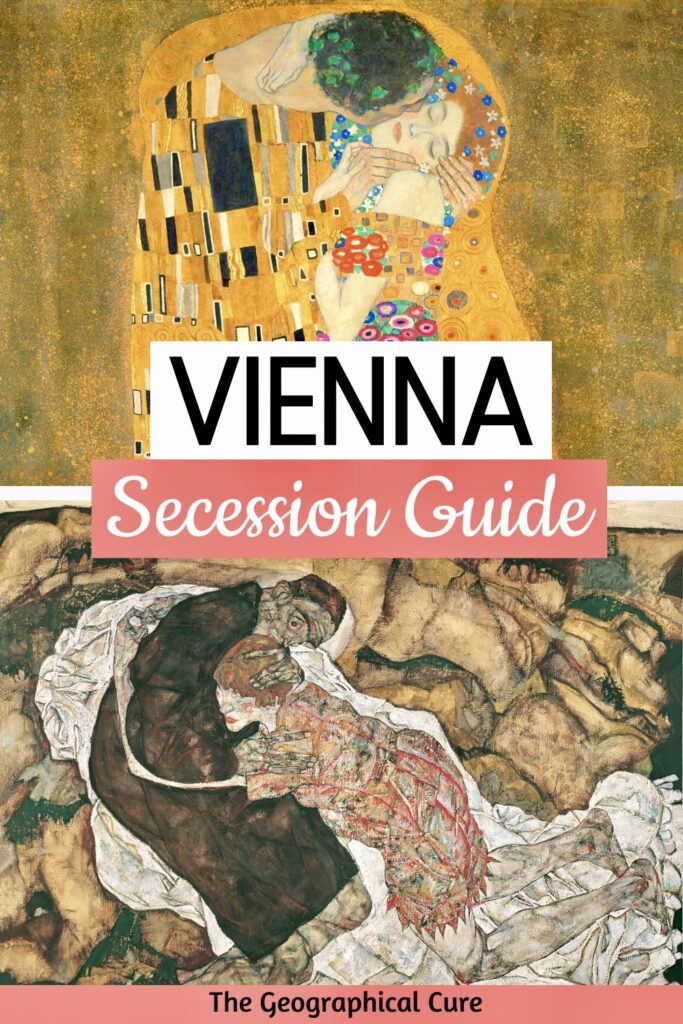Passionate about Art Nouveau? You’re not alone!
I’ve been enamored with this art movement, particularly the Vienna Secession, for years. Having recently spent an extended period in Vienna, I wanted to share insights about the Secession and where you can immerse yourself in Secessionist art and architecture in the city.
The Vienna Secession was a pioneering art movement that boldly embraced modernism. Rejecting the conventions of traditional academic art, it celebrated groundbreaking forms, materials, and styles.
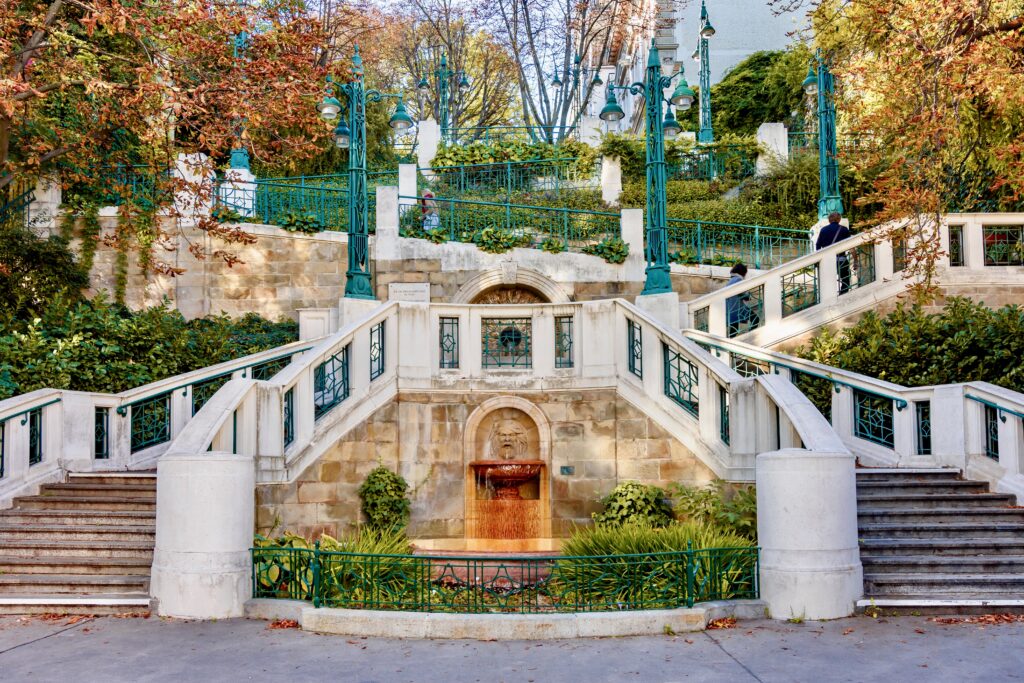
In 1897, a group of young and radical Viennese artists banded together and broke with the city’s conservative art institutions.
They formed a new group, known as the Secession. They were self-consciously modern. The group favored flowing lines, geometric abstraction, decorative motifs, and stylized ornamentation.
The Secession lasted only about 8 years. But the movement had a profound impact on European culture, influencing Art Nouveau, design, architecture, and graphic arts.
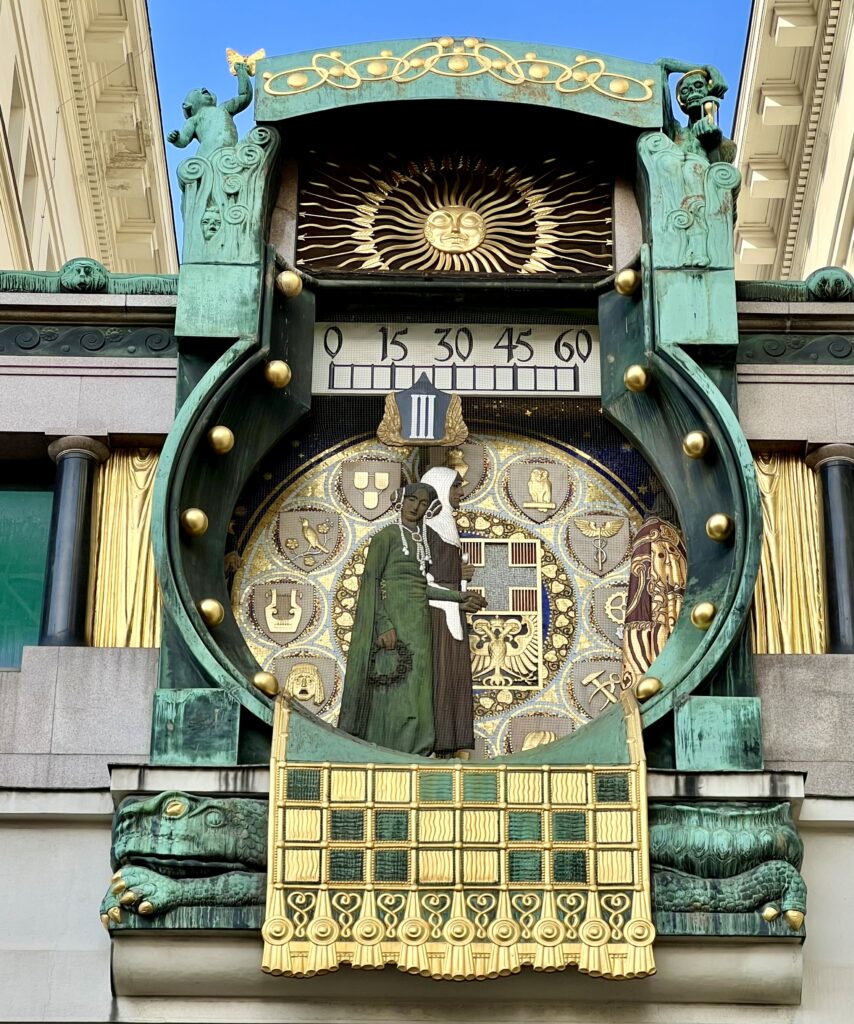
Guide To The Vienna Secession
Breaking Away
For most of the 19th century, Vienna’s art scene was dominated by the Association of Visual Arts, commonly known as the Kunstlerhaus. This institution was closely aligned with the conservative tastes of the Viennese aristocracy.
However, tensions simmered in the 1890s as a new generation of Vienna’s artists found themselves in conflict with the historicist painters who held sway within the Kunstlerhaus.
The breaking point came in 1897 when the Kunstlerhaus refused to show even a single artwork by its younger members at an international exhibition in Paris. In response, a group of artists, led by the young and talented Gustav Klimt, made a daring move.
They publicly declared their separation from the Kunstlerhaus and established their own artistic organization. Joining Klimt in this bold artistic rebellion were the renowned designer Koloman Moser and the visionary architect Otto Wagner.
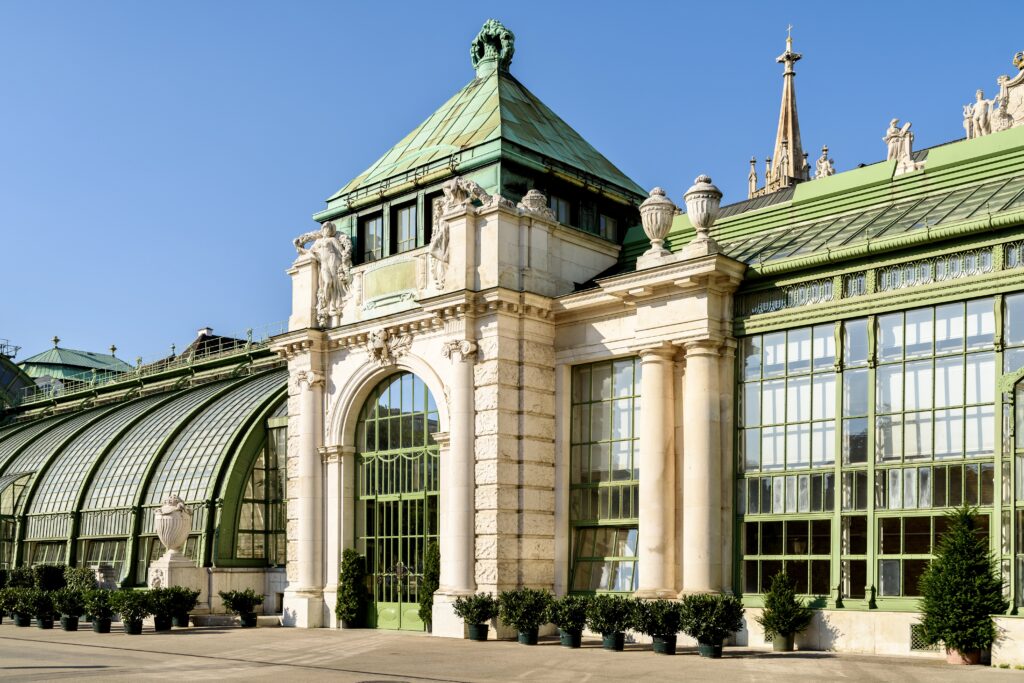
Making Their Mark
Their new group was called the Secession. It was also know as Jugenstil, the German term for Art Nouveau. The movement brought together artists, designers, architects, and a host of other creatives.
Their disparate disciplines were united under the single aim of creating Gesamkunstwer, or a “total work of art.” Equal importance was given to each artistic discipline. They aspired to make fine art more accessible, to move art out of the galleries and into everyday life.
The first priority for the group was to find a space to serve as their headquarters and exhibition space. They persuaded the mayor to give them a plot on Karlsplatz.
It wasn’t remote. It was close to both the Ringstrasse and the Kunstlerhaus.
The building’s design was entrusted to Josef Olbrich, a pupil of Otto Wagner. He created a bold, minimalist design.
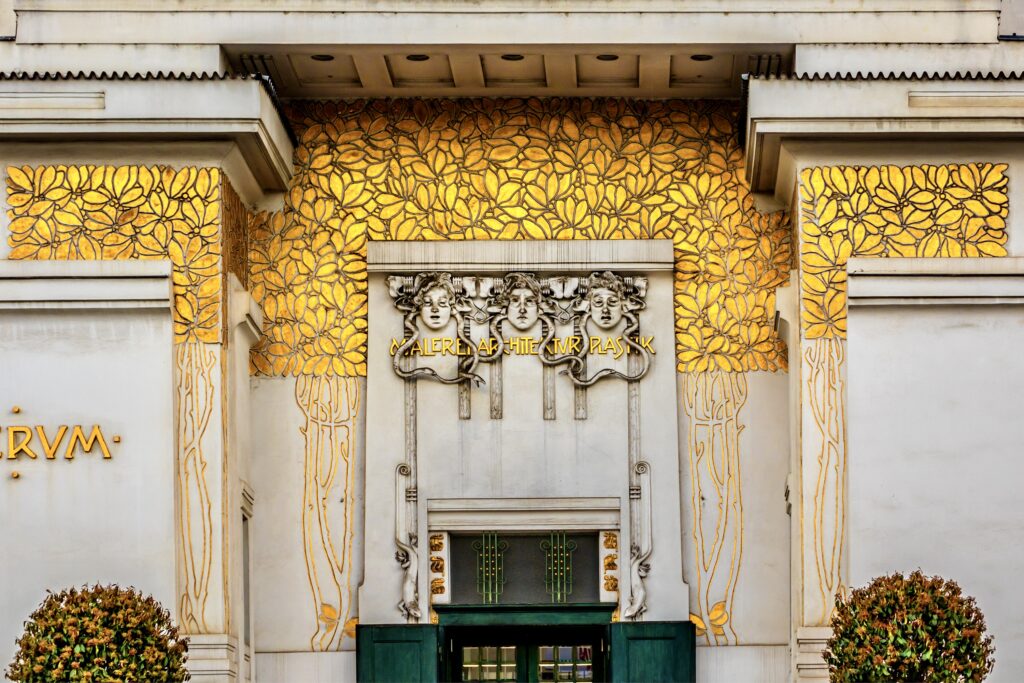
The building physically embodied the Secession’s ideals. It took them less than a year to create the final product, an incredibly fast turnaround.
The result was a masterpiece of Art Nouveau architecture that remains one of the gems of Vienna. The bright white building was half temple and half cult site.
Above the entrance, a motto in large letters reads “Der Zeit ihre Kunst. Der Kunst ihre Freiheit,” which translates to “To every age its art. To every art its freedom.” This motto encapsulates the spirit of the Vienna Secession — a profound belief in artistic liberty and the fluid evolution of art through the ages.
The windowless white building features a distinctive golden laurel-adorned dome. The building is simple, but there is a bit of Art Nouveau ornamental decor.
At the entrance, the three arts (painting, architecture, and sculpture) are represented by Medusa-like masks with snakes hanging down. It was intended as a symbol that thwarts evil.
There is a gold floral motif and the entrance is flanked by two sculptures representing the mythological figures of Theseus and the Amazon.
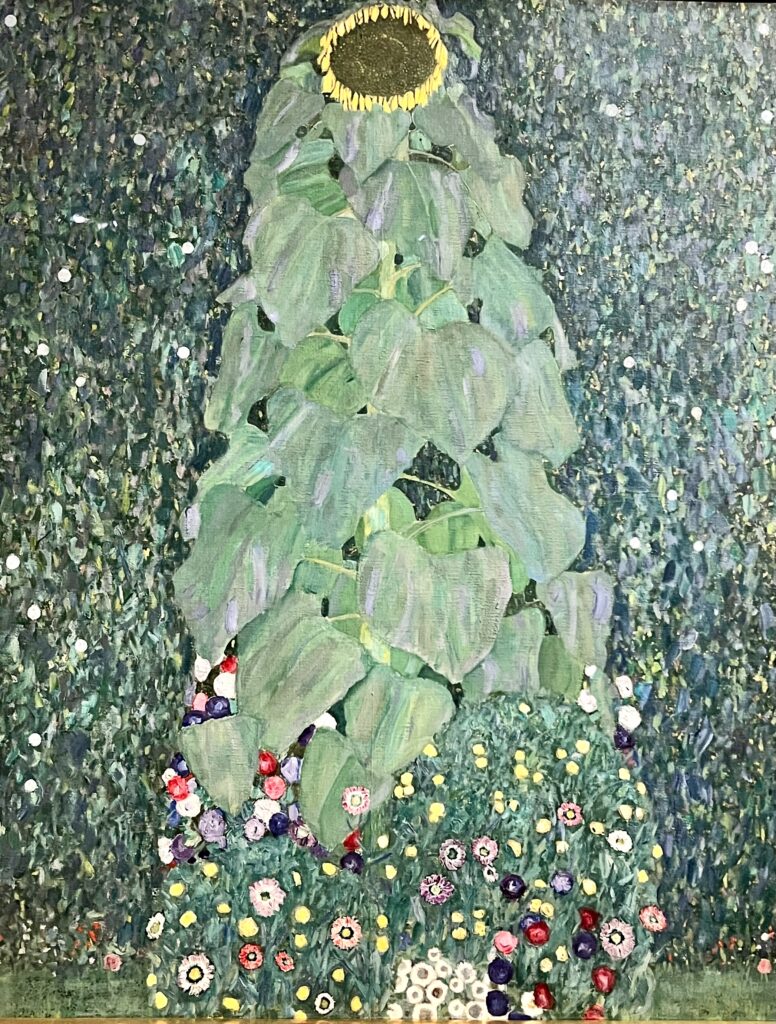
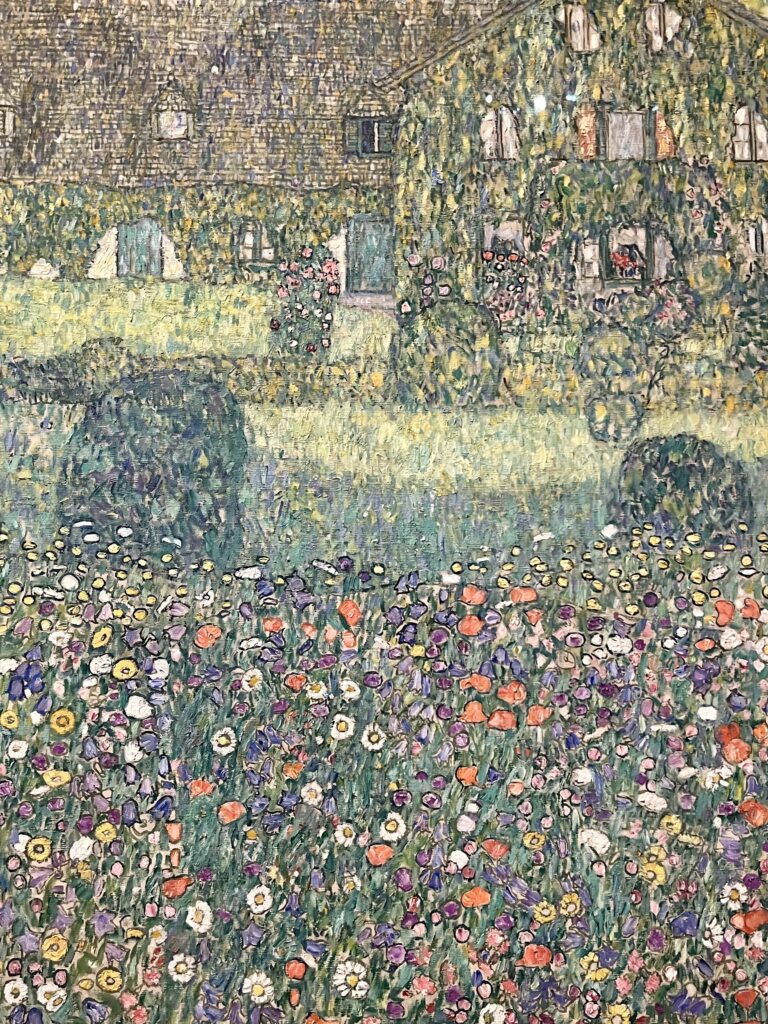
Today, the building is universally loved. But, back then, it was scorned. The Viennese people referred to it as a “mausoleum” and the gilded orb as “the golden cabbage.”
While the building was undergoing construction, the group began publishing a magazine called Ver Sacrum, which means Sacred Spring in Latin. The publication featured innovative designs by Moser and Hoffman, prints and illustrations by Klimt, and content written by many of Europe’s most prominent writers.
Secession Exhibitions
Between 1898 and 1905, the Secession organized several major exhibitions each year. Many of the events were devoted to the group’s members.
But they also had frequent exhibitions by other international avant garde artists, including the first ever exhibition of the French Impressionists in 1903.
In keeping with their idea of Gesamkunstwerk, the members carefully designed every aspect of the exhibition space and promotional materials to fit in with an overall aesthetic concept.
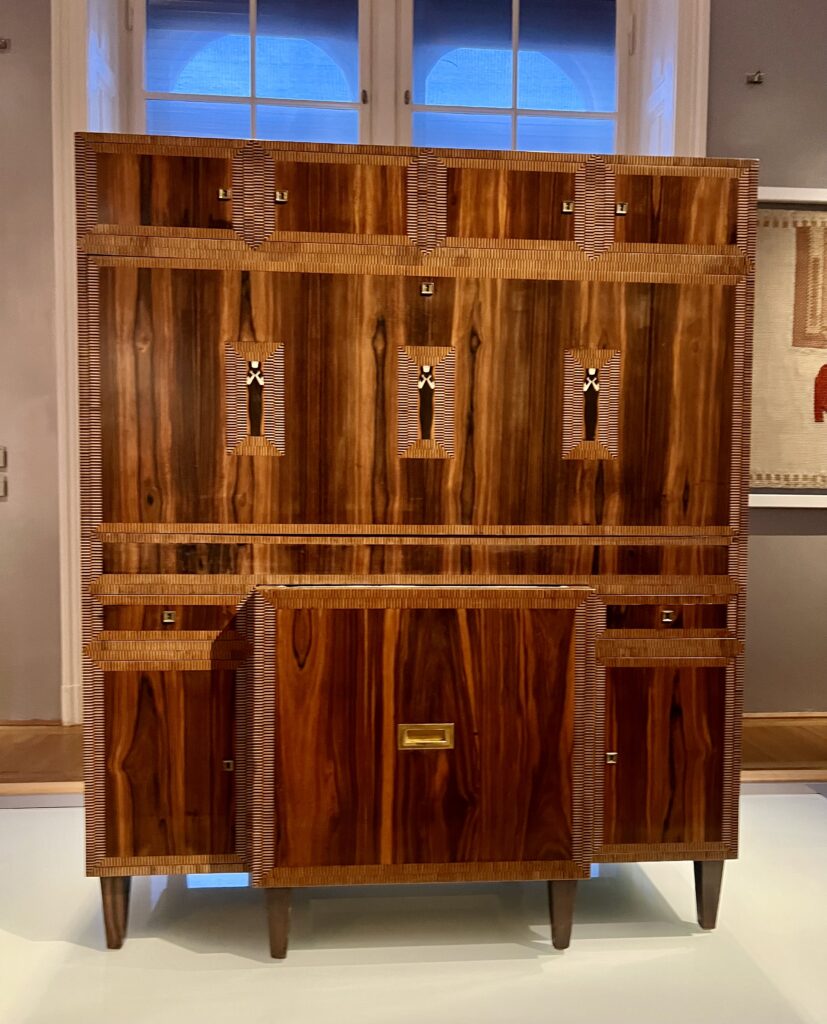
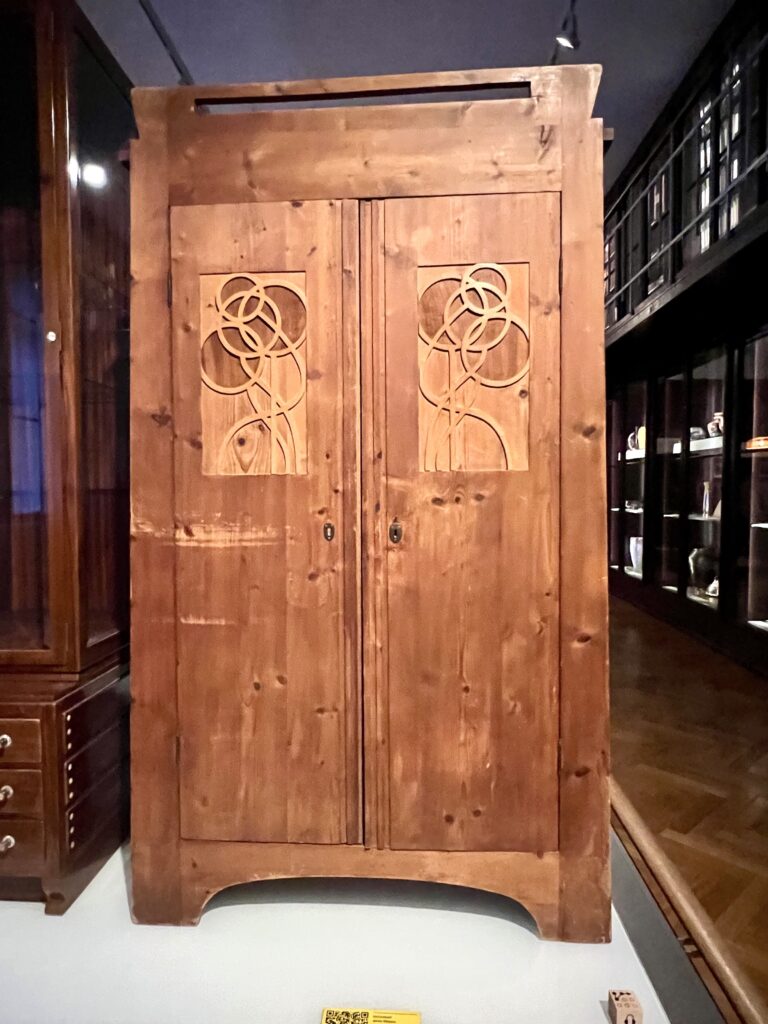
In 1900, the 8th exhibition, they held an important display of the purist works of Scottish artist Charles Renee Mackintosh. His geometrically reduced style had a huge influence on turn of the century Viennese art.
The pinnacle of this approach was the 14th exhibition, the Beethoven Exhibition of 1902. A total of 21 artists, designers, and architects worked to created a “design space” around Max Klinger’s monumental sculpture of the composer (now in Leipzig).
As part of the project, Klimt painted his famous Beethoven Frieze. It was inspired by Wagner’s interpretation of Beethoven’s 9th symphony and the golden mosaics of Ravenna Italy. The frieze reflects Klimt’s fascination with the themes of human existence, love, and the spiritual.
The atonal composer Arnold Schoenberg also wrote a special variation on Beethoven’s 9th symphony.
The exhibit was a huge success. 60,000 people visited and it left a lasting impression on Viennese Culture.
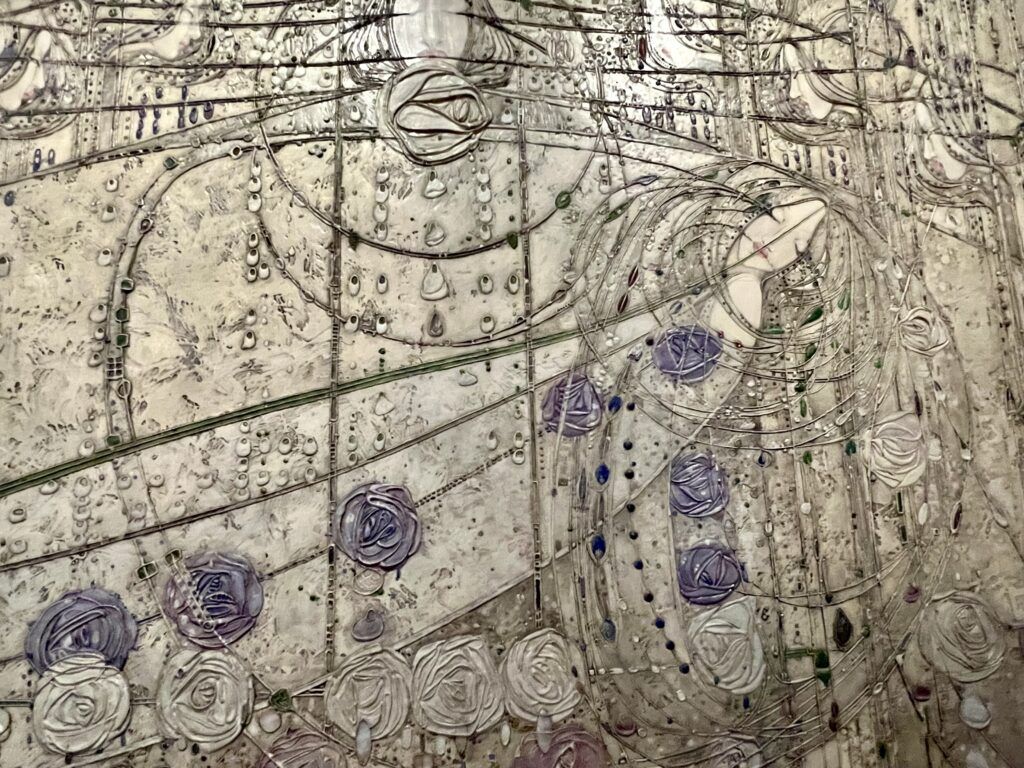
End Of The Secession
The Secession’s glory days ended in 1905. Klimt and other members severed ties with the group to protest the increasing commercialization of its activities.
The Secession kept going for a few more years. But it only consisted of a group of painters, not the interdisciplinary aspect that characterized its breakthrough years.
In 1918, the most prominent members — Klimt, Schiele, Moser, and Wagner all died. That was effectively the final and tragic end of the Secession.
Where To See Art Of The Secession
For fans of Art Nouveau, here are the key places to find works of Secessionist art and architecture in Vienna:
Secessionist Museums
Belvedere Museum
The Belvedere Museum in Vienna houses an extensive collection of Secessionist art, including works by Gustav Klimt, Egon Schiele, and Koloman Moser.
The world’s most famous Secessionist painting, The Kiss, is housed here. There will be long lines to admire it.
For more information, here’s my complete guide to the Belvedere Palace. I highly recommend pre-booking a timed entry skip the line ticket. You’ll definitely need one in high season to visit.
>>> Click here to book this popular guided tour of Klimt’s art in Vienna
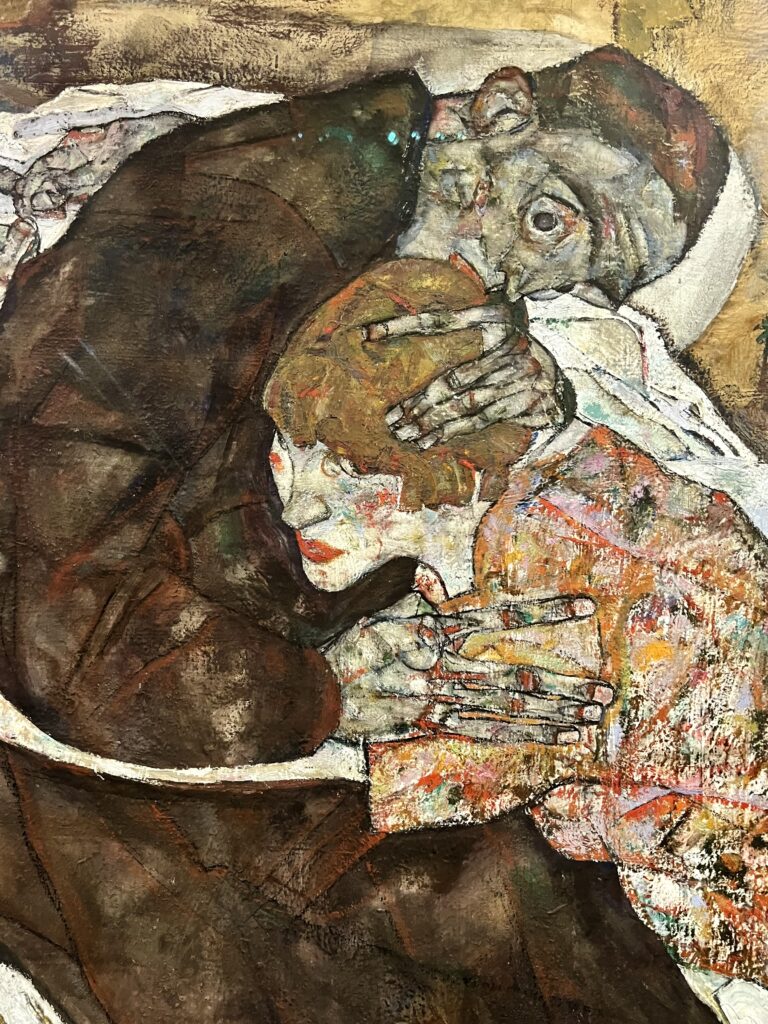
Leopold Museum
The Leopold Museum is a brilliant museum in Museums Quarter. It’s renowned for its collection of Austrian modernist art, featuring works by Secessionist artists like Klimt and Egon Schiele.
It has the world’s largest collection of Schiele works. The artist was famous for his expressive self-portraits. This is where you can see Death and the Maiden and the Portrait of Wally.
>>>Click here to book a skip the line ticket
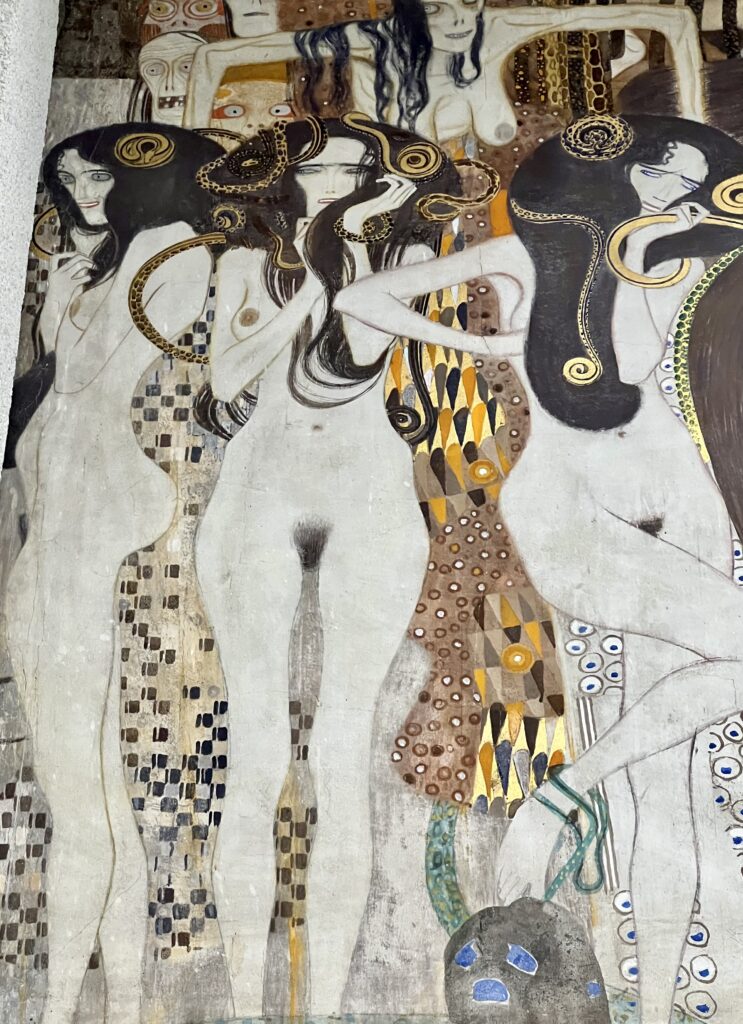
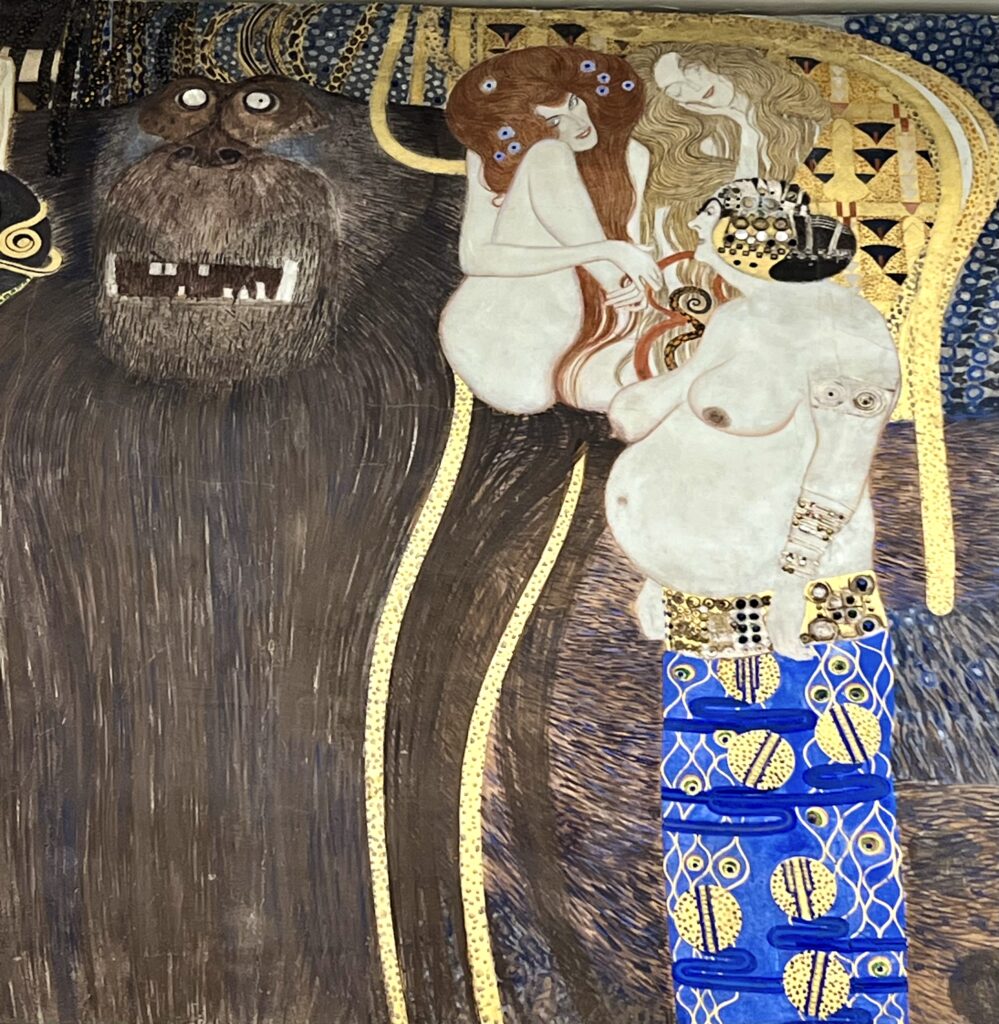
Secession Museum
As I mentioned above, the Secession Building is an exhibition space and a showcase for Secessionist art.
It often features exhibitions of the movement’s works or by contemporary artists. In the basement, you will find the museum’s key permanent installation — Klimt’s Beethoven Frieze.
The frieze was intended to be temporary and was therefore made from ephemeral materials. In 1986, the work was restored in a complicated process and put on permanent display.
As you view it, you can listen to a variation of Beethoven’s 9th symphony.
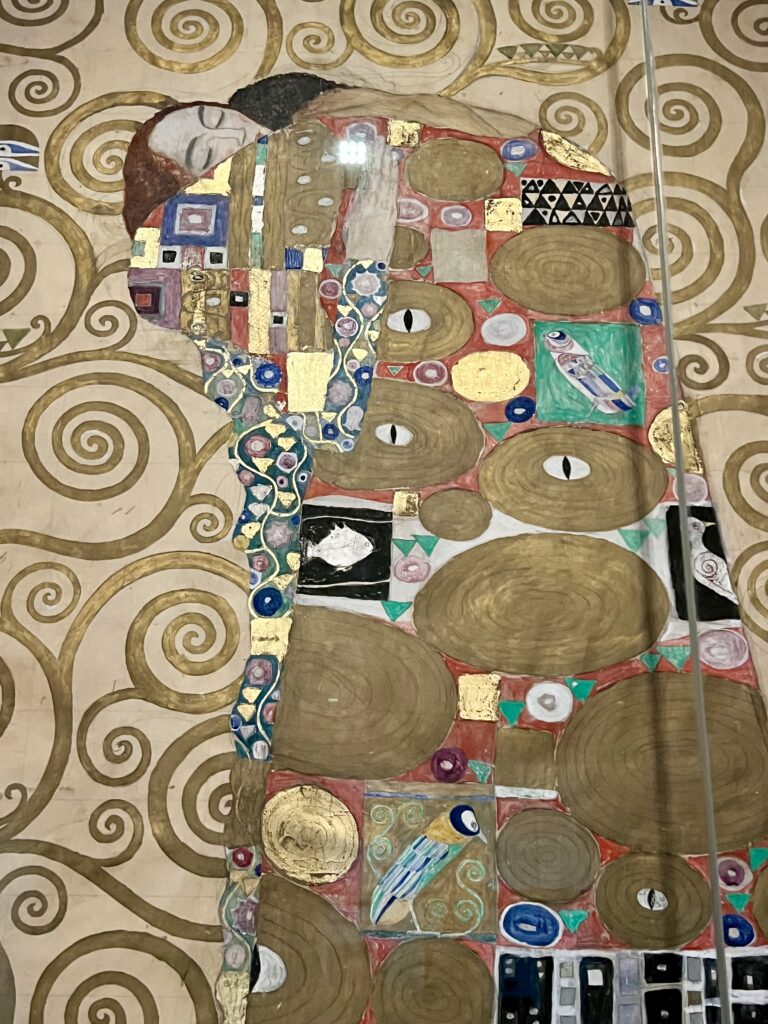
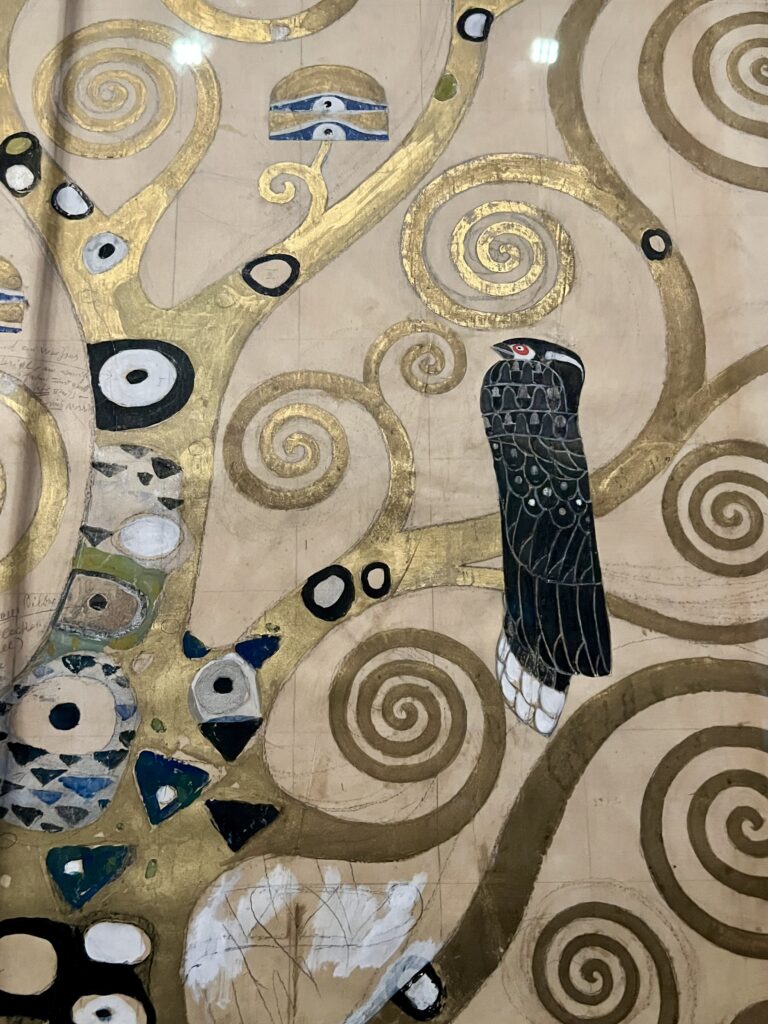
Museum of Applied Arts (MAK)
MAK houses an extensive collection of applied arts, design, contemporary art, and architecture.
The museum’s Vienna 1900 exhibit is what Art Nouveau addicts will want to see.
It showcases amazing artworks from the Secession period, including furniture, textiles, ceramics, and other objects designed by Secession members. A highlight is Klimt’s golden drawings for the Stoclet Palace in Brussels.
>>> Click here to pre-book a ticket
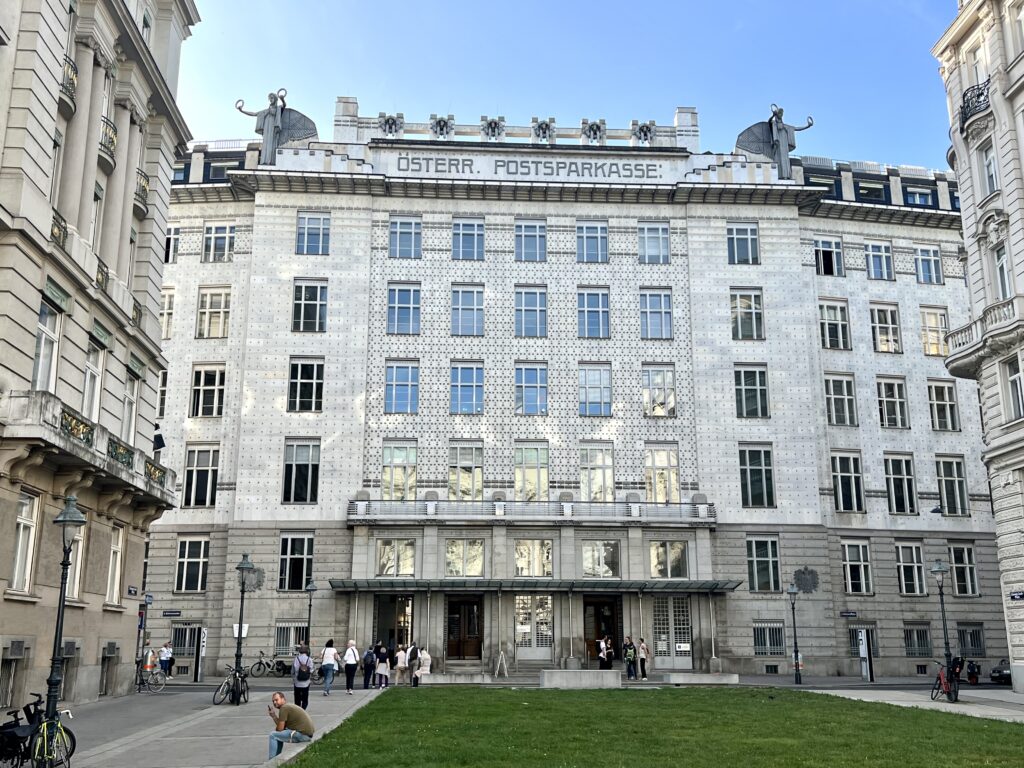
Secessionist Architecture
Post Office Savings Bank
Designed by Otto Wagner and completed in 1906, this building is celebrated for its innovative use of materials and functional design. It’s considered a masterpiece of Viennese modernism.
The building’s design prioritizes functionality while embracing a modern aesthetic.
Wagner rejected excessive ornamentation and instead focused on the functional aspects of the structure, using materials such as glass, iron, and marble. The only ornamentation is the metalwork, some floral motifs, and decorative iron grilles.
At the corners of the roof, there are statues of Hermes (the ancient Greek god of commerce) and Fortuna (the the Roman goddess of fortune, luck, and fate).
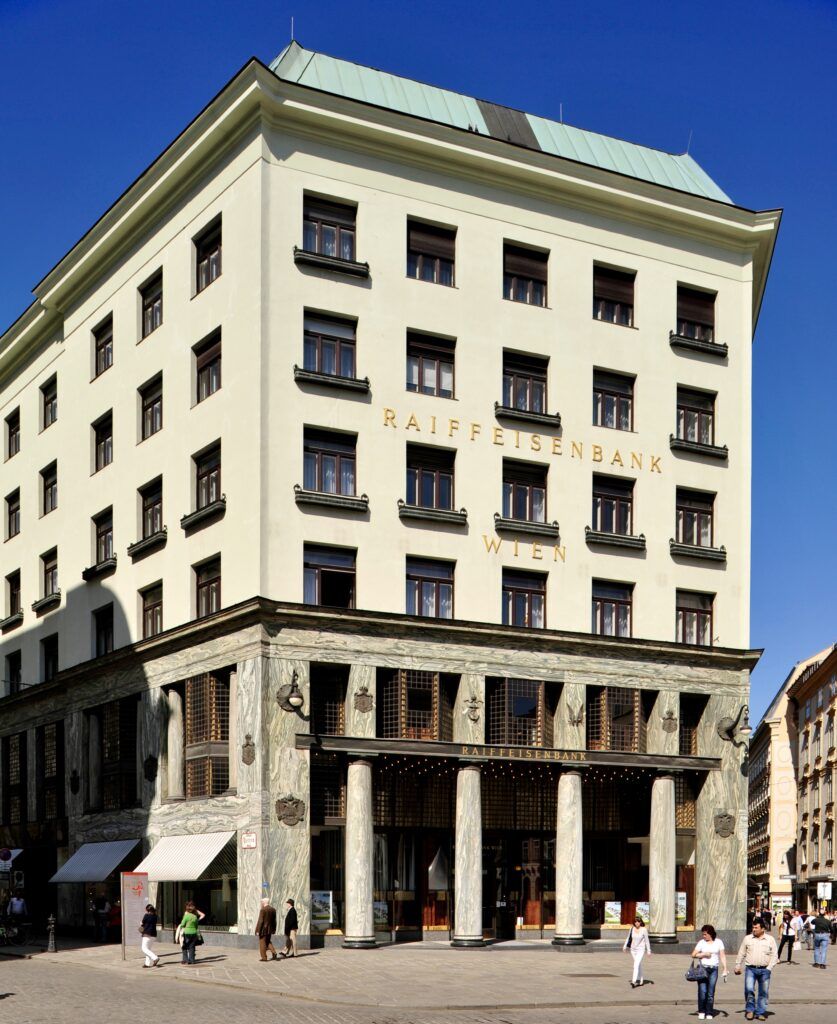
Loos House
The Loos House was built in 1912 for Goldman & Salatsch, a prominent men’s tailor shop. It’s located right across from the Hofburg Palace on Michaelerplatz.
The facade has a clean, grid-like pattern created by rows of square windows and balconies, set against polished stone. The entrance has a portico with sumptuous cipollino marble columns.
Because of its simplistic facade, especially on the upper levels, it was hated by traditionalists and dubbed “the house without eyebrows.” Legend holds that Emperor Franz Joseph hated the Loos House and shuttered his windows to avoid the view.
For awhile, it housed a bank. At the moment, it’s empty and it’s unclear what its future function will be.
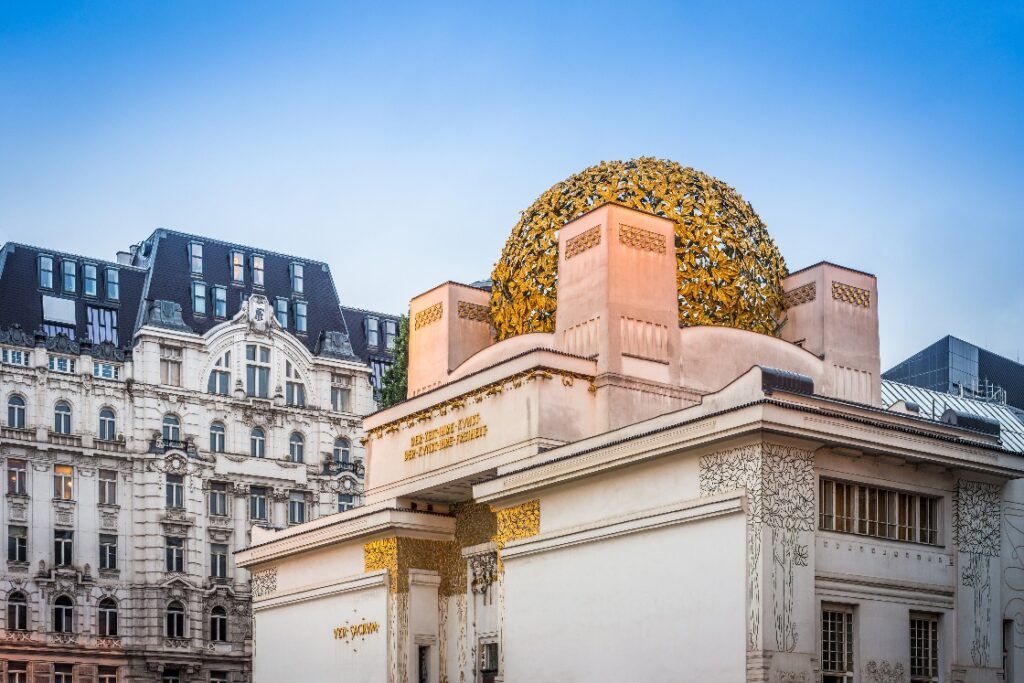
Secession Building
Designed by Olbrich and completed in 1898, the Secession Building is one of the most iconic examples of Secessionist architecture.
It didn’t fit into any of the usual building types. It was, instead, a symbol of the artists striving for a new beginning, a new modernism.
Its distinctive feature is the golden laurel wreath adorning the dome, which symbolizes honor and victory. The building’s exterior showcases clean lines, geometric shapes, and the absence of excessive ornamentation.
The wings of the doors were designed by Klimt’s brother Georg. The ornamental bowls resting on tortoises were a latter addition by Robert Oerley.
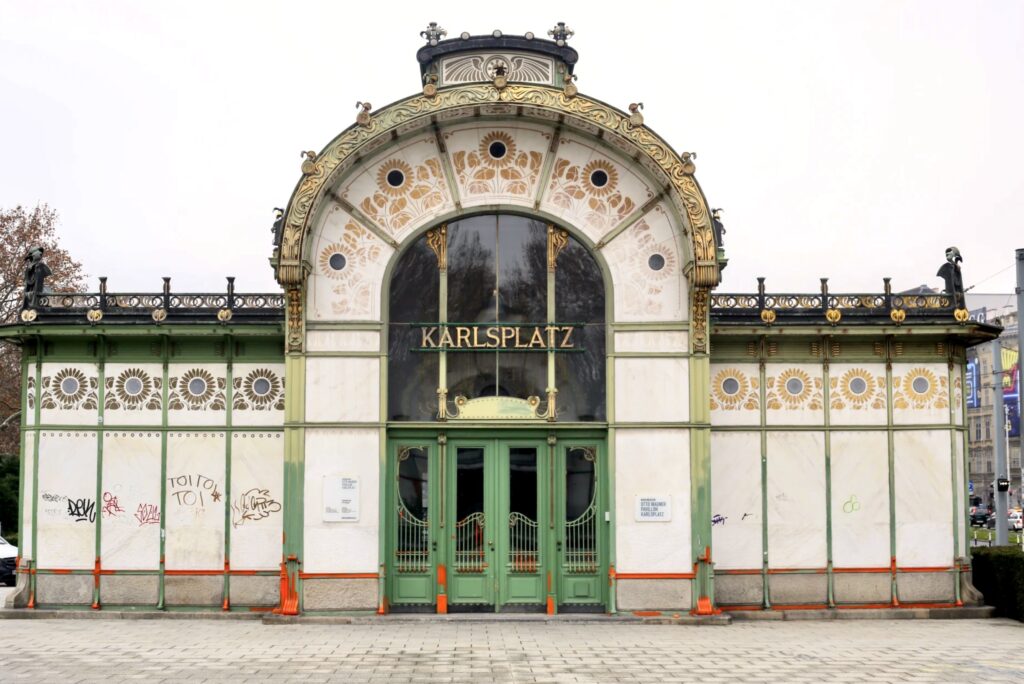
Karlsplatz Station Pavilions
The beautiful Karlsplatz Station pavilions were designed by Otto Wagner with some help from Olbrich. The pavilions have an iron frame and are hung with marble slabs.
They have the standard Art Nouveau color scheme of green and gold. There’s a frieze of golden sunflowers. The arch of the door is also outlined in gold.
Today, one pavilion houses a small museum dedicated to Otto Wagner. The other houses a cafe.
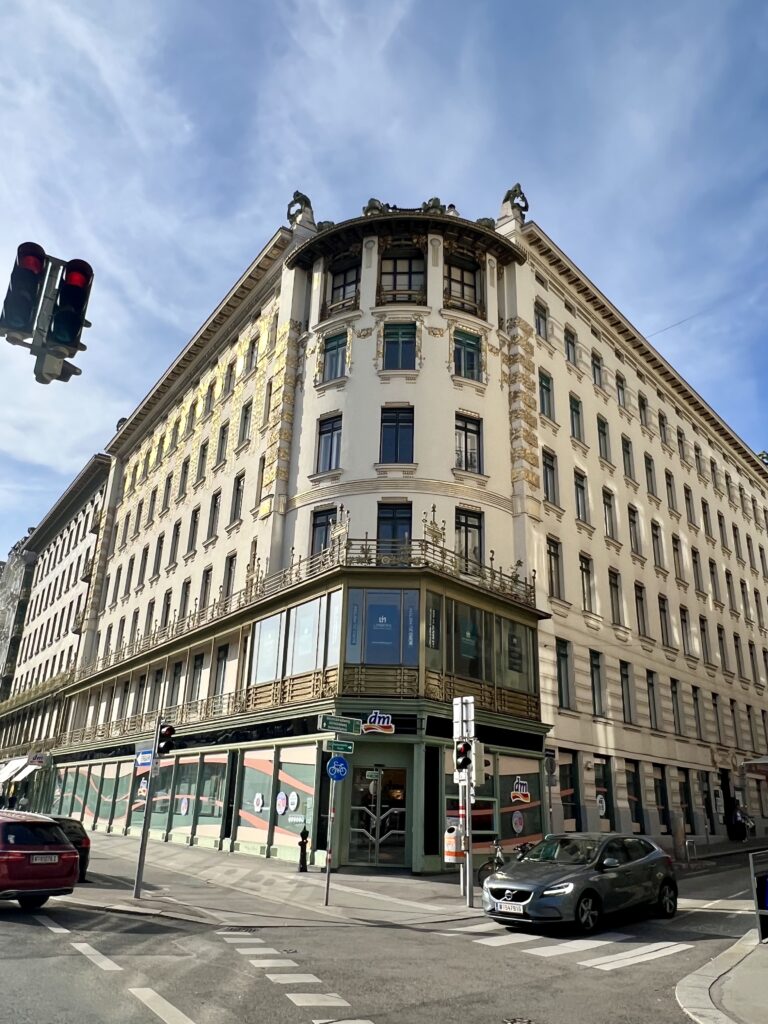
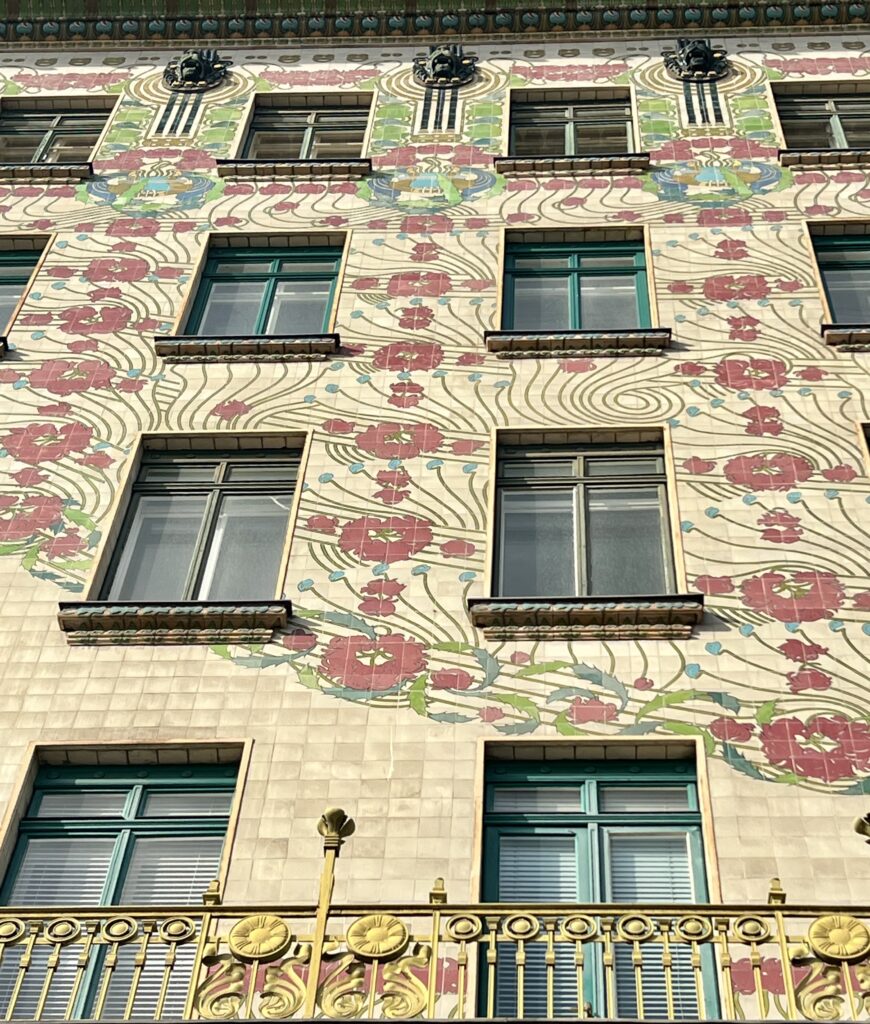
Wienzeile Houses
The Wienzeile houses are a series of apartment buildings located along Wienzeile Street. They are distinguished by their elaborate Art Nouveau facades.
Designed by the renowned Wagner, the buildings are adorned with gold medallions and colorful ceramic tiles, often referred to as majolica. These tiles feature a wide range of decorative motifs, including floral patterns, geometric designs, and stylized ornamentation.
>>> Click here to book a 3 hour Art Nouveau tour
I hope you’ve enjoyed my guide to the Vienna Secession. You may find these other Vienna travel guides and resources useful.
- 3 days in Vienna itinerary
- guide to the Belvedere Palace
- guide to Klimt paintings in Vienna
- guide to the Beethoven trail in Vienna
- what to do in Vienna in winter
- best museums in Vienna
- guide to the Sisi Museum
- guide to the Kunsthistoriches
Pin it for later.

